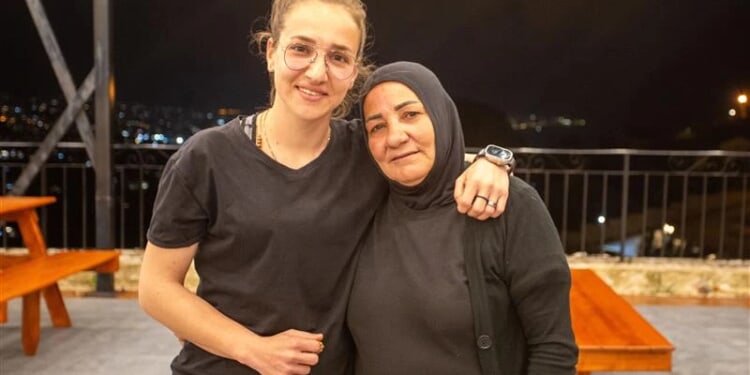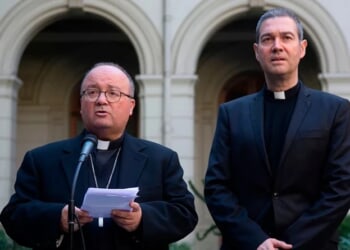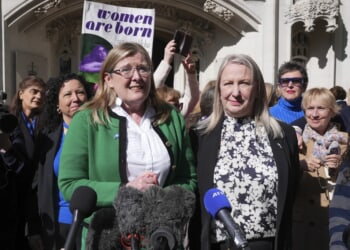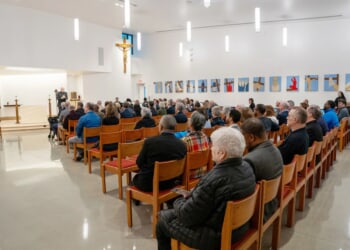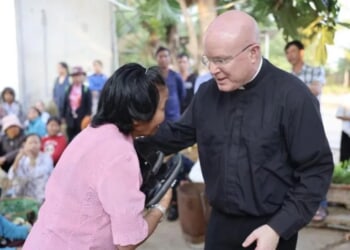Rome Newsroom, Apr 20, 2025 /
07:00 am
In 2017, while working at the World Food Program office in the Azarieh building in downtown Beirut, Iman Hijaze spotted her colleague’s rosary lying on the floor. Alex Imad, a former Shiite Muslim who had converted to Christianity, had accidentally dropped it.
“When I touched it, I felt an electrical shock through my body,” Hijaze recalled.
Instead of returning the rosary to Imad, Hijaze slipped it into her pocket. Later, Imad checked the security camera footage and discovered what happened. When he confronted her, he hugged her gently and drew the sign of the cross on her back.
“I felt another electrical sensation,” Hijaze said when recalling the encounter. “It was the first time I actually felt something religious.”
Raised in a culturally Shiite household in southern Lebanon, Hijaze had long considered herself an atheist. “I used to mock believers,” she admitted. “I told Alex, ‘There’s no God. You left Islam to become Christian? Why?’”
But something had shifted. She asked to accompany Imad to church to see how Christians pray. The next day, he gave her three books: the Bible, the Quran, and a small Arabic-language booklet explaining how to pray the rosary.
“I didn’t even open the Quran — I already knew it,” she said. “But when I read the rosary book, I felt like I was entering another world. I knew then that I had to start praying.”
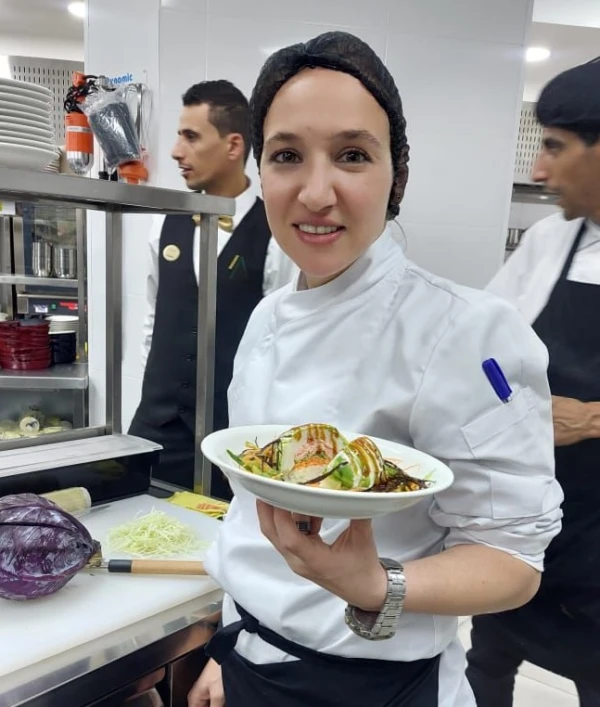
Hijaze shared her growing interest in Christianity with a Christian gym coach named Ravid. She recalled that he was surprised she hadn’t been baptized. Given that she rode motorcycles, lifted weights, and dressed freely, he had assumed she was already a Christian since such a lifestyle is less common among Shiite Muslim women in Lebanon’s more conservative communities. Seeing her curiosity, Ravid introduced her to a Catholic priest, Father Francis, who became her spiritual guide on the path to baptism.
Father Francis began accompanying her to Christian shrines throughout Lebanon. But after visiting the Monastery of St. Veronica Giuliani in Qsaybeh, Hijaze began having terrifying dreams. “I saw the monks with the faces of mummies and beasts,” she said. “A red devil appeared and beat me. Alex was in the dream, trying to protect me.”
The experiences left her overwhelmed. “I couldn’t sleep. Every night I saw horrible things,” she said she told Father Francis. “I told him I didn’t want to pray anymore, didn’t want to be baptized. It was destroying my life.”
But Father Francis stayed faithful to her journey. “Every day after work, he picked me up to pray the exorcism prayers. He told me I was in a spiritual battle — and I must never surrender.”
She also faced opposition at home. “My family saw me reading the Bible. They knew I wanted to change my religion. I suffered for three years.”
In early 2021, Hijaze returned to the monastery, hoping to be baptized, and while at first she mistakenly thought it would not happen, three days later, three candidates — including Hijaze — were baptized at the Shrine of Our Lady of Lebanon in Harissa. Hijaze chose the Christian name Rita, in honor of St. Rita of Cascia. She said she felt a connection with the saint as both had suffered because of their husbands.
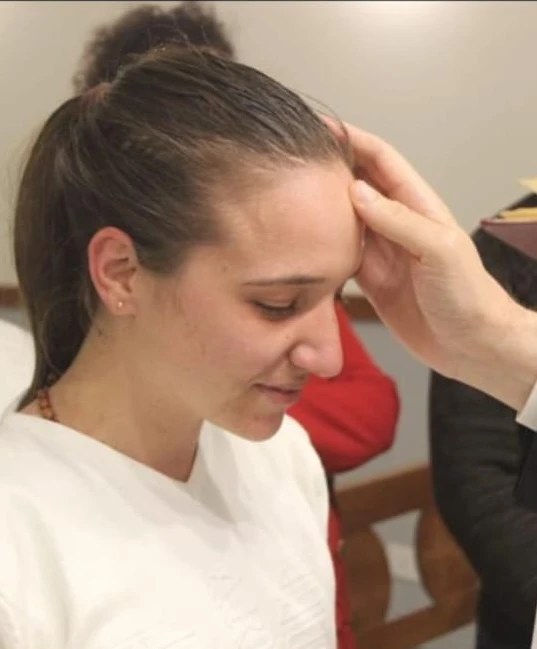
(Story continues below)
Subscribe to our daily newsletter
“After I was baptized, the dreams stopped,” she said. “But the devil tried another way. People around me became more aggressive. He couldn’t reach my mind anymore, so he worked through the unbaptized.”
Her mother, Hadidza, was the first to confront her when Hijaze told her that she had been baptized. She came home carrying a Bible, images of saints, and baptismal gifts. A friend warned her not to go home, fearing her family might kill her. But she went anyway. She said she didn’t care anymore.
Her mother didn’t speak to her at first but later that night had a vivid dream. “I saw a tall and handsome man, wearing a crown of gold,” Hadidza recounted. “He stood silently at the door. I didn’t understand what he said, but I felt it was Isa al-Masih [Jesus the Messiah]; peace upon him!”
Soon after, she had another dream — this time of the Virgin Mary.
“She looked exactly like the statue at Harissa, except she was holding the child Jesus,” Hadidza said.
“I approached and kissed the child on the forehead,” she said. “After what I saw, I said to myself: Leave her be — let her believe in what she believes. Let her live her religion freely. I won’t interfere anymore.”
War breaks out
In September 2024, war in Lebanon broke out. Israeli bombs struck their hometown of Douris.
“We left just in time,” Hijaze said. “Ten days later, our home was gone.” She had just sold her car to finish building a small restaurant next to the house. “Everything I worked for was destroyed.”
She and her mother moved from school to school, sleeping in overcrowded shelters. “We are clean people. It was so hard to sleep among 60 others,” she said.
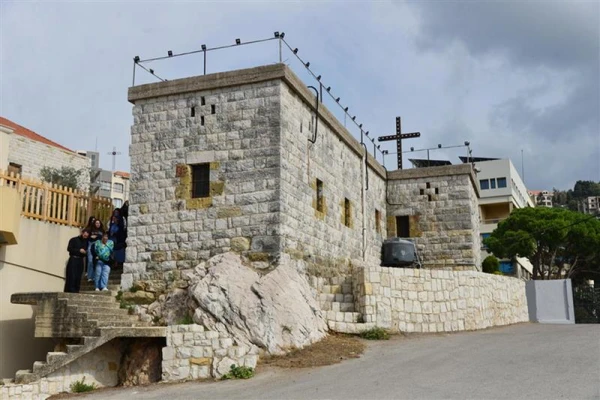
Hijaze’s godmother helped them escape a basement shelter during the conflict and arranged for their relocation to “Beit Youssef” — St. Joseph’s House, an old monastery just steps away from the Shrine of Our Lady of Lebanon in Harissa. Currently the site is being transformed into a retreat center for families and youth by Doud and Kate Tayeh, a Lebanese-American couple raising six children.
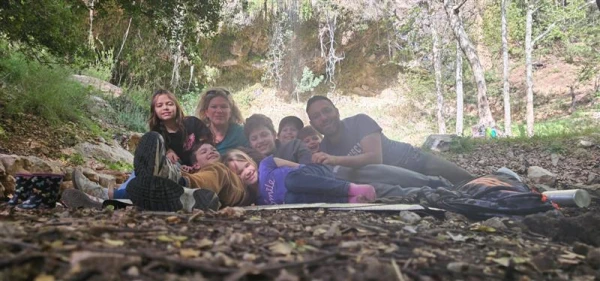
“At first, I was nervous [about the center],” Kate Tayeh admitted. “What if they bring someone from Hezbollah? What if we’re targeted? What if the neighbors see people in hijab and hate us? But the biggest [loss] …would be if we lost our humanity. We’re not going to let that happen.”
They welcomed Hijaze and her mother with open arms, on the condition that no men would stay.
“And they were happy with that,” Kate said.
A few weeks later, Hijaze’s sister also arrived — fleeing another bombing — with her four young children. Another sister remains safe in Beirut.
“When Shiite villages are bombed, families flee to churches in the mountains,” Kate said. “They believe churches are less likely to be hit.”
When Hijaze arrived at St. Joseph’s House, she noticed Doud wearing a rosary and asked him for it.
Hijaze, along with her mother and sister, is currently staying at St. Joseph’s House, facing an uncertain future. She never parts with the rosary Doud gave her, which she wears around her neck. Today, she asks for prayers — and holds onto hope for a safe and stable future for herself and her family, whether in Lebanon or elsewhere in the world.

